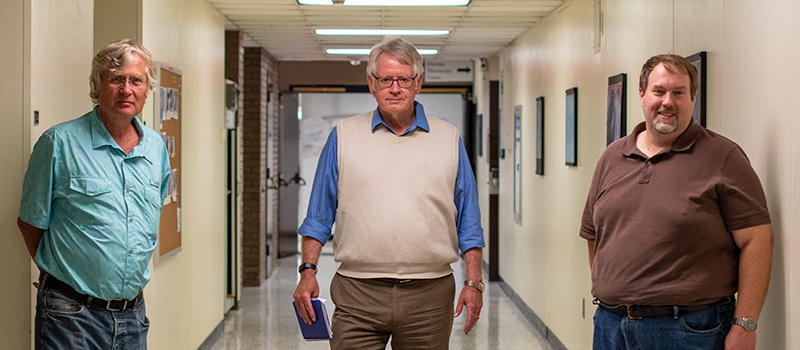By Leigh Thomas | October 1, 2020
An interdisciplinary team from the University of South Carolina is conducting research in material science that has received support from the U.S. Army. The study analyzes the stacking of atoms and how their order impacts the behavior of the materials they make up.
The Army requires advanced materials for a multitude of uses including armor, weapons and communications. This includes more compact electronics, lighter-weight materials and electrical devices that must operate in the field under harsh conditions. This study will allow researchers to understand and ultimately predict how well such advanced materials perform and how long they will last.
Mike Matthews of the College of Engineering and Computing is facilitating the study. Thomas Vogt, professor of chemistry and adjunct professor of chemical engineering, is the lead researcher, joined by mathematics professor Peter Binev and chemical engineering research assistant professor Doug Blom.
Atoms are arranged in columns. Matthews compares their arrangement to how billiard balls of various colors might be stacked and the different arrangements that could be made with five red and five white balls. Because of the vast number of atom arrangements that might be possible, contrast differences of different atom ordering in materials are simulated.
Matthews explains, “In a column of 30 atoms, we may have nine atoms of one sort and 21 of another. Even with just two different types of atoms, this yields more than 14 million possible arrangements. We need simulation capability to guide measurements of what might be detectable.”
The team will use an electron microscope to visualize the order of atoms, and observe what atoms are for instance at the surface and learn how that order affects the behavior of the material.
“The atoms in devices and materials actually migrate over time depending on temperature and other conditions. All of one atom type could migrate to the top, for instance, which could lead to failure of the device," Vogt says. "Understanding the migration of the atoms and their resulting behavior is important to improving performance of products and materials.”
“Structural information on segregation at the atomic level is useful for first principle calculations regarding mechanical, thermal and electrical properties in functional materials and devices,” says Dr. Robert Mantz, chief of chemical sciences division, Army Research Office, an element of the U.S. Army Combat Capabilities Development Command’s Army Research Laboratory. “All of these are important to enabling future Army capabilities for catalysts to generate new materials with unprecedented properties.”
Thomas Vogt is an Educational Foundation Distinguished Professor of Chemistry and Biochemistry in UofSC’s College of Chemistry and Biochemistry and Director of the NanoCenter. His research interests are crystallography; general structural chemistry; chemical synthesis, structures and properties of metal oxides; and electron, X-ray and neutron diffraction techniques and instrumentation.
Matthews is the vice dean and senior associate dean for research and graduate programs for the University of South Carolina College of Engineering and Computing. He is the most recent recipient of the UofSC Mungo Award for Graduate Teaching. He has implemented courses that use a formal education model to train graduate students in critical reading, information literacy, publishing and preparing for the post-graduate school workplace. He also mentors candidates for national graduate scholarships.
